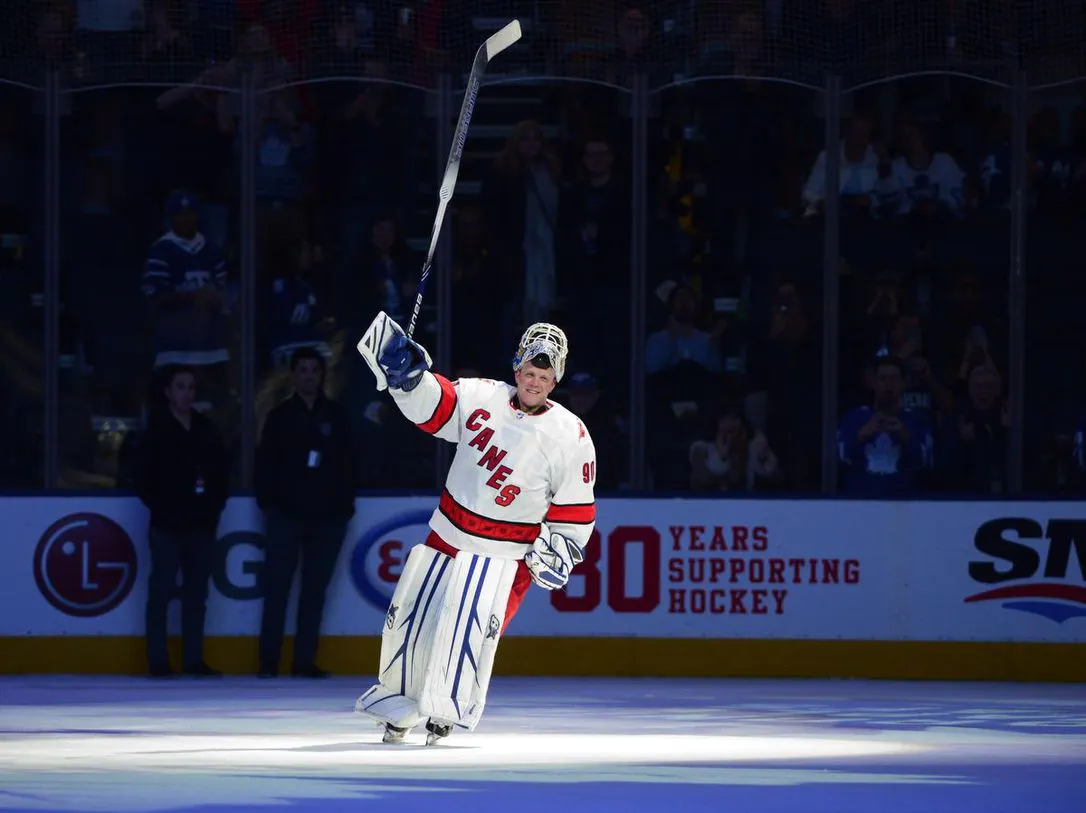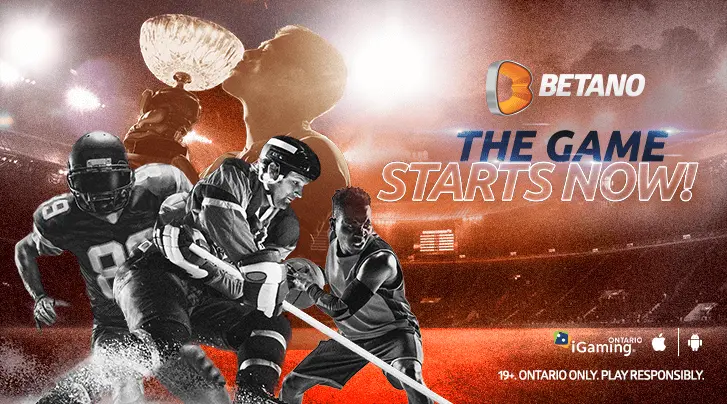Momentum building to ‘professionalize’ EBUG options for NHL teams

MANALAPAN, Fla. — NHL senior executive vice president Colin Campbell chuckled when the subject of emergency backup goaltenders, better known to hockey fans as EBUGs, came up on Day 2 of the General Managers meetings here. Campbell called it “groundhog day” for EBUG talk, because there is seemingly always question of change, but never really a big enough push to enact it.
Campbell said on Tuesday that they are at least discussing internally in league circles that “better framework” may exist for how the NHL incorporates third and emergency goaltenders, but acknowledged that any changes would need to be bargained with the NHL Players’ Association.
NHL deputy commissioner Bill Daly confirmed that the league is examining a few different mechanisms that could be presented as soon as this summer, if enough stakeholders involved feel change is necessary. Even that part wasn’t clear on Monday as a breakout group of select general managers discussed the topic at length. No one involved really likes the amateurish optics of the EBUG, but since it happens so infrequently, is it a problem?
Consider: in the last handful of years, an accountant, a local Zamboni driver, and a Canadian university backup have all tended goal in NHL games. It’s produced some great stories, albeit novelties, and even a book: “Odd Man In: Hockey’s Emergency Goalies and the Wildest One Day Job in Sports.”
But can you imagine a world in which a fan is pulled out of the stands to play center and snap the ball in an NFL game? Or a local lawyer is called in as a relief pitcher in the MLB? It would never happen, let alone for the most critical position in the NHL – which also raises an important question about safety. Should these amateur goalies be put in a position to face 95 mph rockets off the sticks of the game’s most elite players?
There are numerous ways to attack the issue. One is to “professionalize” the position and allow teams to carry a permanent third goaltender, though there are salary cap considerations potentially involved. Another is to remove or reduce waiver requirements for third goaltenders, since so many are claimed on waivers year after year. That is how Spencer Martin landed with the Carolina Hurricanes, where he was claimed on waivers for a second time this season, and ended up signing a one-year extension for $775,000. Our former colleague Mike McKenna has also advocated for a “taxi squad” situation for goalies.
More than ever, the NHL is not just a “two goalie league,” it is quickly morphing into a “three goalie league.” Almost every team carries a third goaltender in the playoffs – eliminating the need for an EBUG. Multiple teams, including Detroit, Montreal, Philadelphia and Buffalo, all carried three goalies on their roster well into this season. The Red Wings still have three goalies on their roster in March – even if they didn’t travel all three goalies to every game, creating an inadvertent and unnecessary EBUG situation.
There are solutions to solve the NHL’s EBUG quandary, but first enough GMs have to speak up to make it one. There was a small step forward this week, which may mean it’s Groundhog Day no more.
Parros says status quo for Player Safety
NHL dean of discipline George Parros presented on behalf of the Department of Player Safety on Tuesday. For fans wondering whether public criticism over perceived inconsistencies in suspension length might raise the temperature in the room, Parros poured cold water on that, saying his presentation was routine.
“I tend to insulate myself from what’s being said out there quite a bit,” Parros said. “It sounds like perhaps there’s anticipation on what I was presenting on, but I would characterize this GM meeting as not unlike any other I’ve had.”
Parros discussed the Player Safety process in a smaller breakout group with GMs on Monday and managers within that group reported back to the larger GM caucus on Tuesday and shared some data points as well as some tendencies that Player Safety has flagged of late. Parros also reminded GMs that they have an open door to sit in on the Department of Player Safety at league headquarters in New York on any given night to gain more insight in the process.
“Nothing really out of the ordinary,” Parros said. “We always come to these meetings, not only this one but others throughout the year, and we’re looking to engage in conversation and get direction if needed from this group. I would say this one was like most others we’ve had.”
Minor Rule Changes
Among a small handful of minor rule changes, the NHL’s GMs voted to send these recommendations to the league’s Competition Committee, which can then forward any changes on to be ratified by the Board of Govenors:
- Coaches will now have the ability to challenge a minor penalty call when a puck is deflected out of play and when a player is high-sticked. A penalty must have been called on the play, and if successfully challenged, the penalty can be rescinded. But the coach better get it right. If the challenge is unsuccessful, the penalty will remain and an additional penalty will be added for unsuccessful challenge, resulting in a 5-on-3 disadvantage. There must be conclusive video evidence and the idea is to prevent incorrect calls for pucks that may have been re-directed off the boards or glass first, or in situations where there is “friendly fire” on a high-stick, when a player is hit in the face by his own teammate.
- Goalies are added to the description in Rule 63.8, which manages game flow when a net is “accidentally” jarred loose during play. If a goaltender is determined to have accidentally knocked the net off while making a save, the goaltender’s team will lose the right to make a line change, and the opposing team will have choice of faceoff location in the attacking zone.
Boca Bytes
One instant change for this season: Players will first receive a warning and then a minor penalty for sitting on the boards or hanging over the boards prior to making a line change. A linesman received a skate cut earlier this season from a player who left his skate at the top of the bench … Campbell said the GMs again discussed changing OT rules to prevent regrouping in the neutral zone, but that the group did not have much appetite to make a change. This season, 70 percent of games that make it to OT end in OT, which is a record high. They also noted that the ECHL moved to a 7-minute OT session, which produces a result in 75.6 percent of games this year, but felt it was too taxing for star players to lengthen the game … For offside review, the NHL plans to continue to be lenient on players entering the zone with clear control and possession, even if the puck is not currently on his stick at the moment his blades cross the blue line … Still to determine a consensus, but the NHL is proposing moving up morning skate times to 10:15 am for home teams and 11:15 am local time for visiting teams. These times have been 10:30 and 11:30 for decades for 7 o’clock starts … NHL commissioner Gary Bettman is expected to address the media on Thursday as the 2024 GM Meetings conclude.
_____

Discover Betano.ca – a premium Sports Betting and Online Casino experience. Offering numerous unique and dynamic betting options along with diverse digital and live casino games, Betano is where The Game Starts Now. 19+. Please play responsibly.
Recently by Frank Seravalli
More from Frank Seravalli
- Sources: Austin, Texas throws its hat into NHL expansion ring as franchise fee hits $2 billion
- Islanders enter Draft Day with No. 1 pick and No. 1 Trade Target in Noah Dobson
- Sources: NHL, NHLPA preparing to announce new CBA framework on Friday
- Blues’ Jordan Kyrou, Leafs’ Brandon Carlo join latest Trade Targets board
- NHL Goalie Market: Who’s shopping, and who’s available?